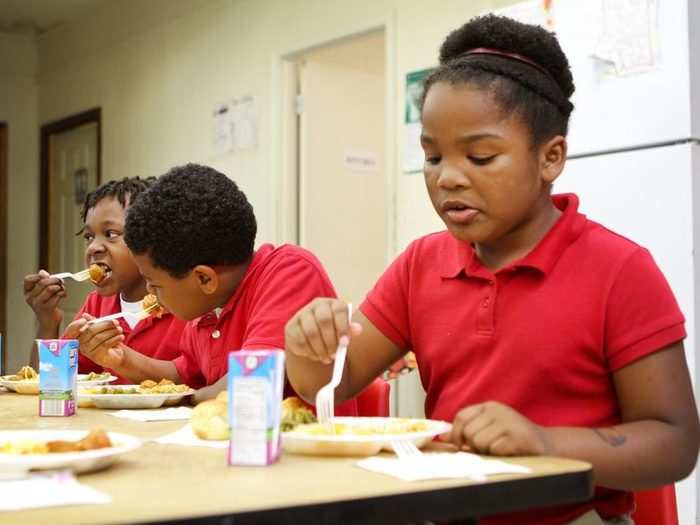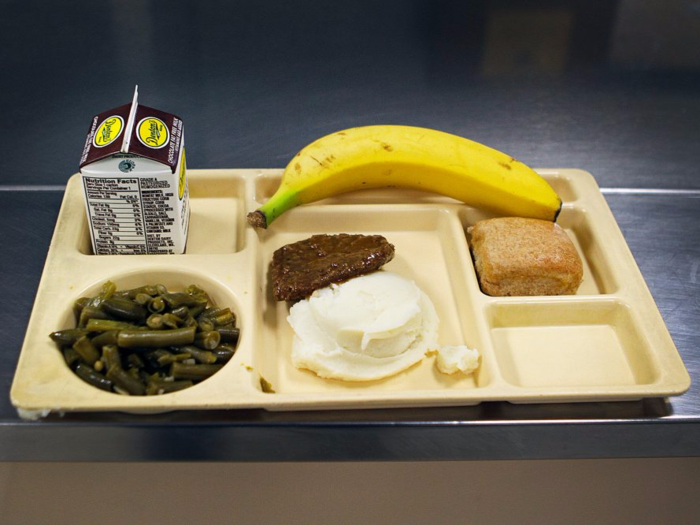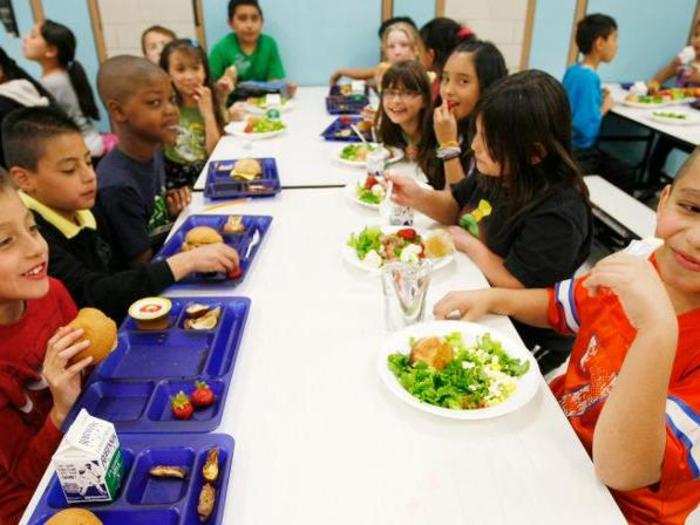The Trump administration has relaxed school lunch nutrition rules - here's what kids can now eat
Since the 2014-2015 school year, cafeterias across the country were required to serve kids "whole grain rich" meals. But not anymore.

Salt's back too.

The Obama Administration's nutrition rules were designed to essentially cut current salt levels in school lunches in half by 2022.
Both low- and high-salt diets are associated with increased mortality. Recent studies suggest the ideal sodium consumption level for kids is around 3 to 4 grams of sodium per day. Current school lunches contain about 1.2-1.4 grams of salt, and the Trump administration is keeping that the same.
Nutrition experts say the target set in the Obama-era rules might have gone too far.
"The sodium requirement may have been too restrictive," Susan Gross, a child nutrition expert at Johns Hopkins, told Business Insider in an email.
Kids are once more allowed to drink sugary flavored milk.

Under the Obama-era rules, added sugar and flavoring was only permitted in skim milks, but now chocolate 1% is allowed, too.
But any carton of flavored milk, regardless of its fat content, isn't a good choice for kids.
More than half of US children in school today are on track to be obese by age 35. Gross said that sugary drinks at school may be contributing to that epidemic. A single carton of flavored milk adds about four teaspoons of sugar to a child's daily diet.
Studies suggest that students have gotten used to the new healthier options, and are eating more nutritious food at school than they were when the rules were first implemented.

Part of the argument for relaxing the lunch nutrition rules, which were first established by the Healthy, Hunger-Free Kids Act (rolled out nationwide in 2012), is that students weren't eating the healthier food offered at school. But studies show that's not true.
A 2014 study in the Journal of Child Nutrition & Management reported that schoolkids were eating more fiber and less saturated fat, while another in the American Journal of Preventive Medicine said they were consuming around 15% more fruits and vegetables. A third study in Childhood Obesity noted the nutrition changes "do not increase total plate waste."
The USDA is leaving in place the rules that require children getting federal assistance for school lunch to put at least some fruit or vegetables on their plate.
If some kids don't eat nutrient-rich foods at school, they won't get them at all.

In August, reporting by The Hechinger Report, a nonprofit news organization covering inequality in education, suggested that kids from low-income families living along the Mississippi Delta are genuinely excited about the food they're fed in free breakfast and lunch programs at school, such as apples and carrots.
According to the report, Shaw, Mississippi resident Betty Newson said her grandson "might get more the food he really needs" at school, but not at home.
Gross said that's a common situation nationwide.
"For some students, the only whole grains they consume may be those from foods received from supplement food programs such as school meals," she said.
Studies have shown that there's a clear relationship between healthier food and healthier brains.

A childhood diet high in processed foods has been associated with a higher likelihood of depression and anxiety later in life. A poor diet in the first years of a child's life can also increase their risk for behavioral and emotional problems.
But some research suggests making healthy diet changes can effectively prevent some depressive episodes, and that eating lots of fruit, vegetables, fish, and whole grains can reduce a person's risk for depression overall.
Exposing kids to a variety of healthy foods early on can impact what they like to eat later in life.

Researchers say the eating patterns that kids establish early in life typically follow them into adulthood.
As a group of Canadian researchers put it in 2007, "if children are to learn to prefer and select healthy foods, they need early, positive, repeated experiences with those foods."
One study showed that simply making lunch line offerings more nutritious (by serving more salads, fruits, and sandwiches instead of tacos and hamburgers) led students to consume 28% fewer grams of unhealthy food.
Considering that 20% of kids eat breakfast at school, and more than 90% get lunch there, the grains and sugar preferences they develop in the cafeteria likely shape the nutrition choices they'll make for life.
Popular Right Now
Advertisement